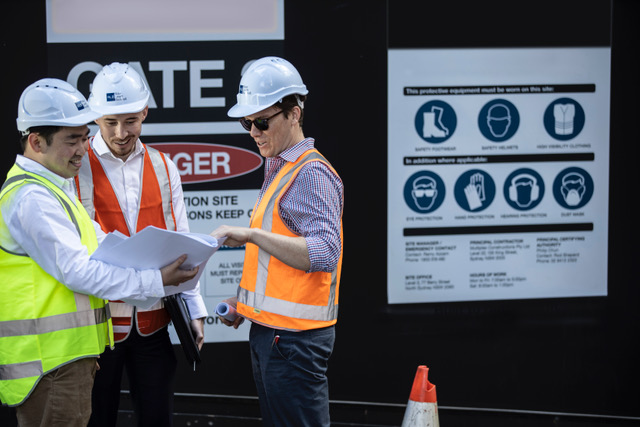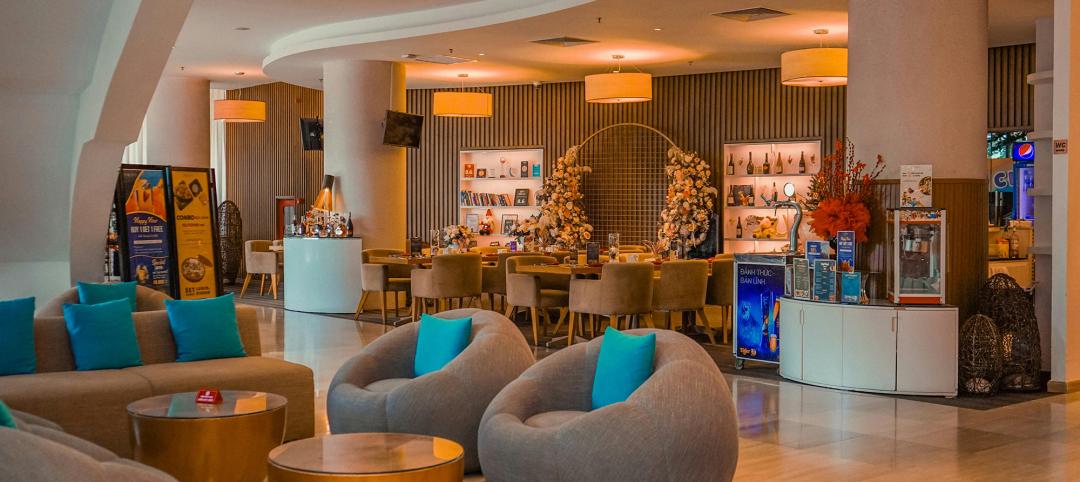The number of considerations that go into starting a construction project are almost too numerous to count. Contracts, materials, labor, deadlines, even weather, to name a few. They vary from project to project, and any one of them can change in an instant, whether it be materials suddenly in short supply, labor that isn’t available for your particular kind of project (is it luxury hospitality or affordable residential?), or an unexpected phenomenon like Covid-19 that makes everything suddenly screech to a halt.
The pandemic seemed to come out of the blue, and it persisted for a couple of years. Many other unexpected issues can also occur without warning. For example, cell tower transmission in Honolulu damaged the crane operating system during the construction of the American Savings Bank, stopping construction for a week until the part could be sourced and replaced. On the same project, even more weirdly, a false missile alert in 2018 sent workers scrambling to leave the project site.
Weather can also be a factor: A sudden deep freeze in Texas in 2021 damaged resin supplies and made commodities that are typically abundant, like paint, in short supply.
Key to surmounting any problems that arise is being up to date on the state of each of the variables and where to go for replacements or replenishments if necessary. Be aware of added costs for any scenario that might play out—for example, if the funds will be needed (and available), or if the design might have to be changed.
Know Your Workforce
At the top of that list is the local workforce. The design and construction team needs to know if it is robust enough and whether available workers have the requisite skills to get the job done. That could be something simple from hanging drywall to doing something more specialized. One-offs like massive art installations in commercial or hospitality projects can be particularly problematic without enough lead time.
Labor needs shift with booms and busts in the economy and projects can suffer if they get caught short of skilled labor. Hawaii, for example, experienced a huge boom in luxury high-rise construction in 2014-15 when towers were popping up all over the place. Developers found themselves in a tough situation where drywall labor was capped out.
In other words, there was a back-up of projects and only a finite number of drywall installers available locally. Same thing with installers of windows and curtainwalls—there just weren’t enough to do the jobs on schedule. Labor had to be flown in from inland locations, paid more and put up in hotels.
In such instances, project managers have to be flexible and knowledgeable enough to do what they have to do, which is hire labor from elsewhere. In Hawaii, for instance, this means getting labor either from one of the other islands or the mainland. This can have an environmental as well as financial impact, especially in a place like Hawaii where the shortage can be particularly acute.
There are unseen and unanticipated problems that come with this kind of demanding work schedule. While it’s good for the economy and laborers’ incomes, it often results in serious worker burnout. Everyone working longer hours, including weekends and holidays, leads to shortened careers while others make dramatic career path shifts based on burnout. It’s a real challenge that needs to be managed better industry-wide and especially significant during the “Great Resignation.”
Anticipate Potential Increased Workforce Costs
Increased cost is sometimes the hardest thing to reconcile. In the 2014-15 example, the total cost of construction goes up as much as 10% if you fly workers in from the mainland or from destinations that are more than four hours’ drive time away. Project managers also have to calculate the cost of housing the workers, which can be substantial, and the fact that they might be slower given the lack of familiarity with the local market.
Situations like this don’t happen that often but when they occur, it becomes a huge topic of conversation and a huge concern among project managers and workers. There’s no question that a lack of available labor means the cost of the project is going to go up; you’ll be paying premiums on overtime until you hit a point where not even that will satisfy demand.
Skilled Labor and Specialty Projects
Project managers know that incurring additional costs where specialty projects are concerned is a given. Hiring workers with special, costlier skills is acceptable, as long as the cost is built into the design budget, like an art installation in a two- to three-story-high glassed-in lobby, or the unusual fabrication of a golden dome for a mosque at the Muslim Community Center of Louisville, Ky., that was fabricated in Cincinnati, Ohio, and completed just weeks before the start of the Ramadan holiday. Labor can be even more complicated if you need to find a fabricator who could build to strict religious standards as well as the client’s.
Terrazzo flooring is another unusual material that requires a special skill set to lay down properly. Terrazzo specialists are rare in some locations, so the design team needs to be aware of the potential costs involved. But most designers and architects who know local markets rely on concrete aggregates that are attractive in their end use and readily available. The local labor force may be familiar with alternates, narrowing the margin of error.
They are also aware, for instance, of how cement can be manipulated to mimic other finishes with more of a high-end look. Same material, just a different way of polishing it. What workers and project managers know is that it’s about achieving a look with what’s already available and doing so at a reasonable price.
The local workforces in some states are also up on environmental concerns like solar panels which most agree are not as common as they could be. There have been government backed incentives to install them on residences creating savings on electric bills. The environmental impact of construction benefits by making the best use of locally available product and labor in any project.
Money savings from energy conservation initiatives in any kind of project generally get funneled back into the project to add more curb appeal to anything being built in what is an extraordinarily busy and booming residential and commercial market. Any money saved on commercial projects will likely go into upgrading mechanical or electrical plants to enhance efficiency.
New methods tend to scare people—no one wants to be the guinea pig. But a sure thing is a product or technology that blows people away or carries a cost savings, either up front or long term, that is enticing enough to get them to take on the risk of the unknown or new technology. Project managers must be on top of new developments to know how to sell them.
About Paul Belshoff
Paul Belshoff is Resident Manager for Rider Levett Bucknall currently working on Maui. Over the course of his career with RLB, he has contributed to a portfolio of landmark developments and renovation projects around Hawaii totaling more than $500 million in construction value. He draws on his background in engineering to deliver exceptional properties, applying ethical, economical and practical solutions to mitigate project risks and produce high-value results for his clients.
About Rider Levett Bucknall
Rider Levett Bucknall is an award-winning international firm known for providing project management, construction cost consulting and related property and construction advisory services at all stages of the design and construction process. The firm was voted #1 Cost Consultant in World Architecture Magazine for 2016, 2017, 2018 and 2019. Rider Levett Bucknall’s North American practice has offices in 21 cities across North America, including Boston, Calgary, Chicago, Denver, Hilo, Honolulu, Las Vegas, Los Angeles, Maui, New York, Phoenix, Portland, San Francisco, San Jose, Seattle, Toronto, Tucson, Waikoloa, and Washington, D.C. With more than 3,600 employees worldwide, Rider Levett Bucknall brings unparalleled value and service to its prestigious group of clients, through its robust experience and high-level expertise. The firm enjoys a professional heritage that spans more than 230 years, and it continues to be a global leader in the construction industry throughout the Americas, Africa, Asia, Europe, the Middle East and Oceania.
Related Stories
M/E/P Systems | Oct 30, 2024
After residential success, DOE will test heat pumps for cold climates in commercial sector
All eight manufacturers in the U.S. Department of Energy’s Residential Cold Climate Heat Pump Challenge completed rigorous product field testing to demonstrate energy efficiency and improved performance in cold weather.
MFPRO+ New Projects | Oct 30, 2024
Luxury waterfront tower in Brooklyn features East River and Manhattan skyline views
Leasing recently began for The Dupont, a 41-story luxury rental property along the Brooklyn, N.Y., waterfront. Located within the 22-acre Greenpoint Landing, where it overlooks the newly constructed Newtown Barge Park, the high-rise features East River and Manhattan skyline views along with 20,000 sf of indoor and outdoor communal space.
Resiliency | Oct 29, 2024
Climate change degrades buildings slowly but steadily
While natural disasters such as hurricanes and wildfires can destroy buildings in minutes, other factors exacerbated by climate change degrade buildings more slowly but still cause costly damage.
Hotel Facilities | Oct 29, 2024
Hotel construction pipeline surpasses 6,200 projects at Q3 2024
According to the U.S. Hotel Construction Pipeline Trend Report from Lodging Econometrics, the total hotel pipeline stands at 6,211 projects/722,821 rooms, a new all-time high for projects in the U.S.
Office Buildings | Oct 29, 2024
Editorial call for Office Building project case studies
BD+C editors are looking to feature a roundup of office building projects for 2024, including office-to-residential conversions. Deadline for submission: December 6, 2024.
Healthcare Facilities | Oct 28, 2024
New surgical tower is largest addition to UNC Health campus in Chapel Hill
Construction on UNC Health’s North Carolina Surgical Hospital, the largest addition to the Chapel Hill campus since it was built in 1952, was recently completed. The seven-story, 375,000-sf structure houses 26 operating rooms, four of which are hybrid size to accommodate additional equipment and technology for newly developed procedures.
Contractors | Oct 25, 2024
Construction industry CEOs kick off effort to prevent suicide among workers
A new construction industry CEO Advisory Council dedicated to addressing the issue of suicide in the construction industry recently took shape. The council will guide an industry-wide effort to develop solutions targeting the high rate of suicide among construction workers.
Sports and Recreational Facilities | Oct 24, 2024
Stadium renovation plans unveiled for Boston’s National Women’s Soccer League
A city-owned 75-year-old stadium in Boston’s historic Franklin Park will be renovated for a new National Women’s Soccer League team. The park, designed by Fredrick Law Olmsted in the 1880s, is the home of White Stadium, which was built in 1949 and has since fallen into disrepair.
Laboratories | Oct 23, 2024
From sterile to stimulating: The rise of community-centric life sciences campuses
To distinguish their life sciences campuses, developers are partnering with architectural and design firms to reimagine life sciences facilities as vibrant, welcoming destinations. By emphasizing four key elements—wellness, collaboration, biophilic design, and community integration—they are setting their properties apart.
Adaptive Reuse | Oct 22, 2024
Adaptive reuse project transforms 1840s-era mill building into rental housing
A recently opened multifamily property in Lawrence, Mass., is an adaptive reuse of an 1840s-era mill building. Stone Mill Lofts is one of the first all-electric mixed-income multifamily properties in Massachusetts. The all-electric building meets ambitious modern energy codes and stringent National Park Service historic preservation guidelines.

















